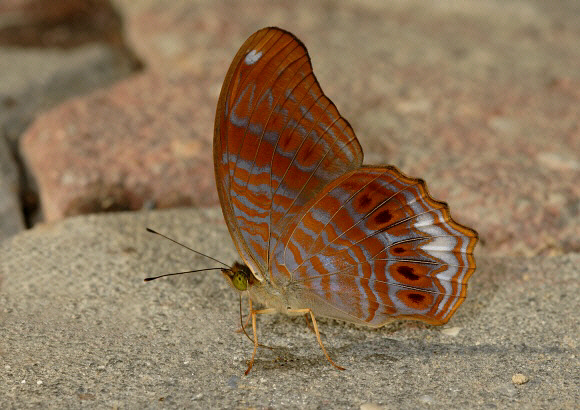
Introduction
There are 8 species in the genus Terinos, most of which are restricted to particular parts of the Oriental or Australian regions, although terpander, clarissa and atlita are all quite widespread.
Both sexes of terpander are rich purple above with 2 large whitish lunules near the termen on the hindwing. They can easily be distinguished from the other Malaysian species atlita and clarissa, as both of these have the termen extended into a short stubby tail.
Terinos terpander is found in Myanmar, Thailand, West Malaysia, Singapore, Sumatra, Sarawak, Brunei, Sabah, Kalimantan and Java.
Habitats
In Malaysia this species inhabits rainforest at elevations between sea level and about 600 metres. It tends to be found in open areas such as along roadsides, boardwalks and wider forest trails.
Lifecycle
The egg is barrel-shaped, pearly-white in colour, and has about 20 vertical ribs, each connected by a series of tiny ridges. It is laid singly on the underside of leaves of the foodplant.
The larva when fully grown is a dirty pale green colour, with a series of dark green, cream, and greyish stripes running from the orange head to the anal segment. There is a double row of long unbranched shiny black spines along the back, and a row of shorter spines above the spiracles. It has been bred in captivity on Rinorea anguifera ( Violaceae ), but in the wild has been found in Sumatra on Antidesma ( Euphorbiaceae ).
The pretty chrysalis is pale green, with a dark pink line running along the edge of the wing cases either side of the thorax. It has a double row of pink curved spikes along the back, those on the 2nd abdominal segment having chrome silver bases, and those on the 3rd abdominal segment being particularly long, with hooked tips rather like antlers.
Adult behaviour
The adults are active mainly in the mornings, either in overcast or bright sunny conditions. They tend to sit still for long periods later in the day, but can sometimes be disturbed from rest.
Males tend to flit from leaf to leaf, basking here and there for a moment or two before moving on. They can also occasionally be seen on the ground imbibing moisture, and at these times tend to flit constantly from spot to spot, while slowly fanning their wings.
